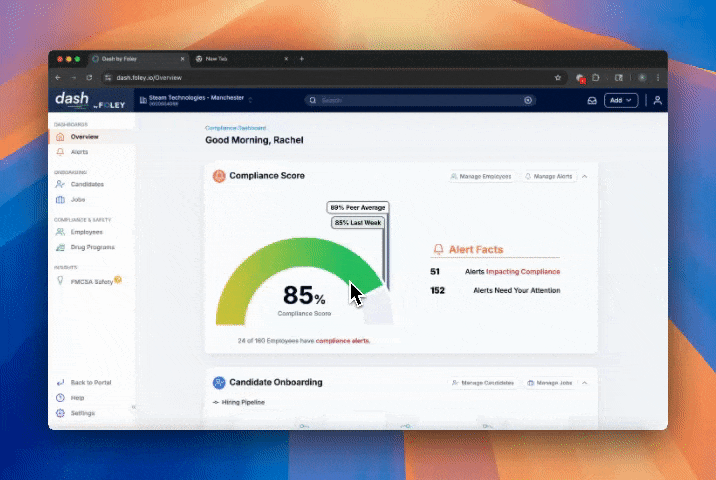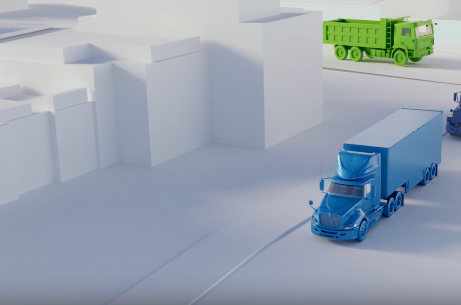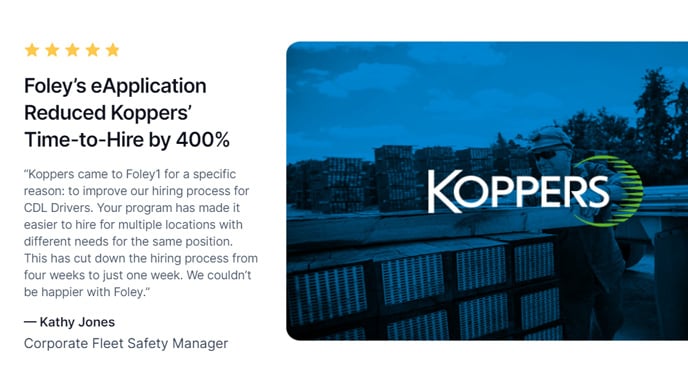Inside American Transportation Research Institute's (ATRI) 2025 Top Industry Issues: What Fleet Leaders Can Learn

The economy’s still in the driver’s seat — but compliance may be your best co-pilot.
Each fall, the American Transportation Research Institute (ATRI) releases its Top Industry Issues Report — one of the most-watched publications in trucking. The 2025 edition has arrived, and once again, the findings reflect the state of an industry navigating high costs, changing regulations, and fast-moving technology.
While the economy remains the top concern for both drivers and carriers, this year’s results point to a growing intersection of financial pressure, legal exposure, and compliance modernization.
Top Concerns for Drivers & Carriers in 2025
1. The Economy
Economic uncertainty continues to dominate as fleets battle elevated costs across fuel, equipment, and financing. Many are focusing on operational efficiency and smarter processes to maintain margins. Automating manual tasks and centralizing data are proving essential for stability — and scalability.
2. Lawsuit Abuse & Insurance Costs
Litigation funding and “nuclear verdicts” remain major contributors to rising insurance premiums. Fleets are investing in better documentation and visibility to protect themselves, with digital driver files and real-time data helping build defensible safety records.
Read more about this phenomenon: Nuclear Verdicts in the Transportation Industry.
3. Driver Retention & Compensation
Competition for qualified drivers shows no sign of slowing down. Fleets are shortening hiring cycles and creating smoother onboarding experiences to attract and retain talent — strategies that not only boost driver satisfaction but also reduce downtime and turnover costs.
Learn how to Turn Applicants into Hires — Without the Bottlenecks.
4. Compliance & CSA Updates
ATRI reports continued attention on FMCSA’s evolving CSA program and safety-scoring methodology. Fleets now need faster insight into how violations and roadside inspections impact their safety standing.
With Foley’s data-driven compliance tools, fleets can easily track violations, visualize CSA performance, and take corrective action before issues become costly penalties. Real-time CSA monitoring and smarter use of FMCSA data are helping safety managers stay proactive, not reactive.
For a deeper look at how data visibility pays off, read How Smarter FMCSA Data Can Improve Safety, Reduce Risk and Save Money.
5. Training & Safety Standards
Training and qualification standards are under increased scrutiny as regulators and insurers focus on documentation consistency. Fleets that digitize training records and centralize file management can quickly produce proof of compliance and strengthen their safety culture.
Learn more about Transitioning from Paper to Digital Processes.
6. Technology & AI in Trucking
Automation and AI continue to reshape how fleets manage everything from maintenance to compliance. ATRI’s 2025 report highlights both the enthusiasm and the caution: fleets want innovation that’s transparent, dependable, and easy to integrate into existing operations.
Foley’s modern compliance technology delivers exactly that — smarter automation that simplifies workflows and keeps fleets organized, accountable, and audit-ready.
What It Means for Fleets
The same forces identified in ATRI’s 2024 report haven’t just persisted — they’ve intensified.
Economic pressure, litigation risk, insurance volatility, and regulatory complexity are all colliding, making cost control and compliance inseparable.
Today’s fleets aren’t just managing drivers and deliveries; they’re managing data, documentation, and defense. High operating costs and shrinking margins are pushing fleets to automate the back office — replacing manual processes with smarter, connected systems that save time and eliminate vendor sprawl.
Fleets that integrate their compliance systems are seeing measurable results:
-
Reduced administrative burden: Automation can cut manual compliance work by up to 40%, streamlining hiring, onboarding, and recordkeeping.
-
Lower insurance exposure: Fleets with continuous monitoring and organized safety documentation report 10–15% lower premiums and stronger negotiating power with insurers.
-
Stronger safety performance: Real-time CSA insights and proactive alerts help reduce violations and out-of-service rates by 20–30% within the first year.
-
Better data for decision-making: Unified dashboards give leaders clear visibility across compliance and safety metrics, improving response times and strategic planning by 25% or more.
With unified systems and automated monitoring, fleets can respond to issues faster, prove their safety record with confidence, and focus their energy where it matters most — keeping drivers safe and operations profitable.
Three Smart Moves for 2025
-
Centralize your compliance: Consolidate driver qualification files, background checks, and training records in one secure platform.
-
Get proactive: Use continuous monitoring and alerts to identify problems before they affect your CSA score or safety rating.
-
Simplify your tech stack: Fewer vendors and integrated systems mean faster workflows, better data, and lower costs.
Looking Ahead
ATRI’s 2025 report confirms what many fleets already know: success now depends on visibility, not volume. Fleets that embrace digital compliance tools today will be better prepared for tomorrow’s challenges — and better positioned to grow safely and sustainably.
At Foley, we’re proud to help fleets modernize compliance, streamline hiring, and stay ahead of evolving regulations. The road ahead may be complex, but smarter technology makes it a lot smoother.
See how our compliance platform keeps fleets audit-ready and efficient — book a demo to learn more.
Related Articles
Foley and Keystone Join Forces to Relieve Hard Commercial Insurance Market
Foley Launches New CSA Data Monitor Program
The CVSA Releases 2024 Roadcheck Inspection Results
.png)


